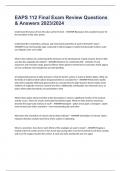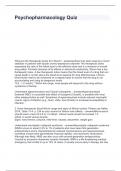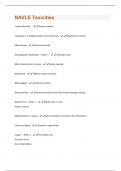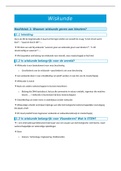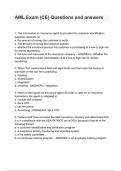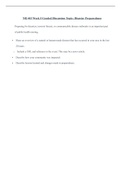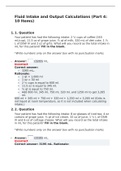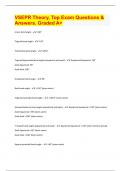Exam (elaborations)
EAPS 112 Final Exam Review Questions & Answers 2023/2024
- Course
- Institution
EAPS 112 Final Exam Review Questions & Answers 2023/2024 Understand the basics of how the solar system formed. - ANSWER-Big bang is the accepted manner for the formation of the solar system Understand the composition, physical, and mechanical properties of each of the Earth's layers - ANSWER-...
[Show more]
